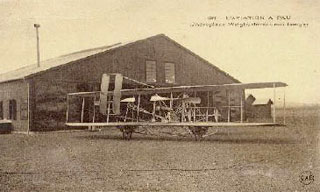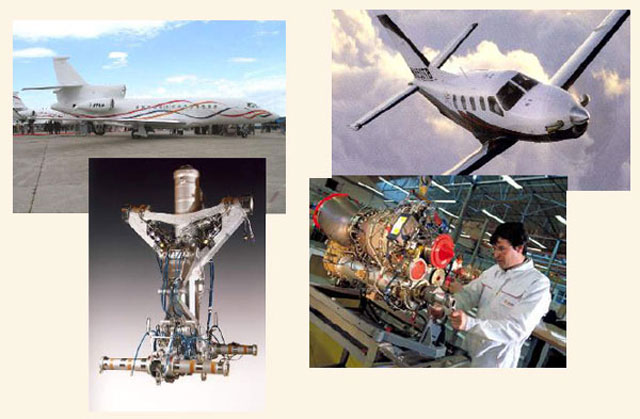Hystory of aviation in Pau

Just before the outbreak of the Second World War and up to 1941, the Adour Basin saw the arrival of numerous aeronautical companies which, when peace returned, established worldwide reputations and contributed to maintaining the region’s aeronautical vocation.
This was to be the case of Dassault-Aviation in Anglet (originally Latécoère, then Breguet), Fouga and then Potez in Aire-sur-l'Adour, Safran Helicopter Engines (Turbomeca) in Bordes and Tarnos, Safran Landing Systems (Messier-Dowty) in Arudy and Bidos, and finally Daher-Socata (Morane-Saulnier) in Tarbes Ossun.
A cluster of aeronautical sub-contractors has gradually developed around these prime manufacturers, which today makes the Adour Basin a major contributor to the region’s “Aerospace Valley”, the leading European competitiveness cluster in the aerospace sector.
From military aviation...
In turn, numerous other French manufacturers came to open a facility in Pau, which was thus becoming a major centre for aviation training and experimentation.
Several records for distance, speed and altitude were broken in Pau, particularly by Blériot and Déperdussin planes.
In 1911, the French Army considered it necessary to create a military pilot’s licence with specific tests and, in 1912, military aviation is officially created.
From then on, aviation became a permanent fixture in Pau. Following the lead of the private schools, a military aviation school began to train pilots in Pau and, when the First World War broke out, the numbers of its trainees and its capacity grew to such an extent that it became one of the largest flying schools in France.

... to the creation of the Adour Basin aeronautical activity cluster
Just before the outbreak of the Second World War and up to 1941, the Adour Basin saw the arrival of numerous aeronautical companies which, when peace returned, established worldwide reputations and contributed to maintaining the region’s aeronautical vocation.
This was to be the case of Dassault-Aviation in Anglet (originally Latécoère, then Breguet), Fouga and then Potez in Aire-sur-l'Adour, Turbomeca in Bordes and Tarnos, Messier (now Messier-Dowty) in Arudy and Bidos, and finally Daher-Socata (Morane-Saulnier) in Tarbes Ossun.
A cluster of aeronautical sub-contractors has gradually developed around these prime manufacturers, which today makes the Adour Basin a major contributor to the region’s “Aerospace Valley”.








